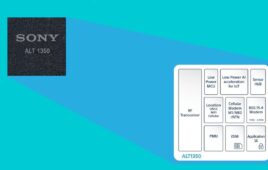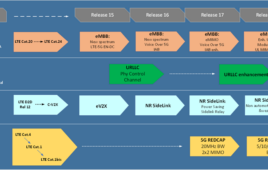.jpg?n=7166px;) In the past decade, the United States has enjoyed what are arguably the two most revolutionary devices to hit any market, namely Apple’s iPhone and Motorola’s RAZR. But the U.S. market doesn’t have a feature phone that matches the INQ Mini, which is available in Europe.
In the past decade, the United States has enjoyed what are arguably the two most revolutionary devices to hit any market, namely Apple’s iPhone and Motorola’s RAZR. But the U.S. market doesn’t have a feature phone that matches the INQ Mini, which is available in Europe.
The INQ Mini represents a major step forward in the evolution of the social mobile feature phone. INQ, which launched its first Facebook phone, the INQ1, in October of 2008, is owned by Hutchison Whampoa. INQ phones are available on 3 in the United Kingdom, Ireland, Australia, Hong Kong, Singapore and Italy.
If you haven’t heard, INQ makes a “social mobile” feature phone that for all intents and purposes acts a lot like a trimmed-down smartphone. Some would say that’s nothing new, but in fact INQ takes just a few of the most important aspects of the smartphone (i.e. social networking, Skype, news) and executes them with a kind of elegance rarely seen at this price point.
At least in Europe, INQ has made the affordable feature phone cool again. They’ve done so by offering consumers the full package. Right down to the box it comes in, the INQ Mini is stylish and playful. While the form factor doesn’t stray too far from the traditional feature phone, neither does it stoop to cheap hardware and the blah grays. But then this isn’t a phone that’s about hardware.
What makes the INQ Mini is its software. Built over the top of Qualcomm’s Brew, Mini impresses from the first push of the power button. From the flashy intro animation to the real-time Yahoo! weather widget that comes installed on the home screen, you know you’re not in Kansas anymore.
Deep integration and pre-installation of Skype, Facebook and Twitter on a revolving menu at the bottom of the screen are also attractive assets. There’s a tiled menu that offers up the rest of the phone’s feature set, including apps, call log, camera and music.
 While none of this may seem altogether unusual, you might be surprised at how extraordinary it really is. Contrary to popular belief, the iPhone hasn’t been sprinkled with magic dust. Rather Apple came up with a design that is all its own and quite simply the most intuitive on the market. INQ has done very much the same with its phones but for an entirely different market segment. The design is all its own and the interface is ultra-intuitive.
While none of this may seem altogether unusual, you might be surprised at how extraordinary it really is. Contrary to popular belief, the iPhone hasn’t been sprinkled with magic dust. Rather Apple came up with a design that is all its own and quite simply the most intuitive on the market. INQ has done very much the same with its phones but for an entirely different market segment. The design is all its own and the interface is ultra-intuitive.
The INQ Mini is a revision of the original INQ phone, the INQ1, which was larger but featured many of the same specs. The INQ Chat is also available. That phone features a full qwerty keyboard and resembles a BlackBerry form factor. The Mini and Chat are 3G capable (no Wi-Fi) and offer real-time updates of social networking, IM and e-mail.
The INQ Mini 3G runs Qualcomm’s QSC 6270 chipset. The device has a 2-megapixel camera, with P2P (see what I see) video capability. Memory on the Mini can be expanded up to 8GB via a Micro SD/SDHC card. While there’s no Wi-Fi, the unit does include Bluetooth 2.0.
For what the INQ does and the ease with which is does it, the pricing is as attractive as the device itself. The Mini is £49.99 ($81 U.S.) in the United Kingdom or free with an 18-month contact that will run around $23 U.S. dollars per month.
Most likely, a carrier here is dickering over the details of a U.S. version of INQ’s phones. The Skype functionality could be a sticking point for carriers here. However, any carrier that ignores what INQ is doing is ignoring the future of mobile social networking and VoIP calling. INQ represents the perfect example of the kind of competition the FCC hopes to protect in its call for any device, any application on any network.




